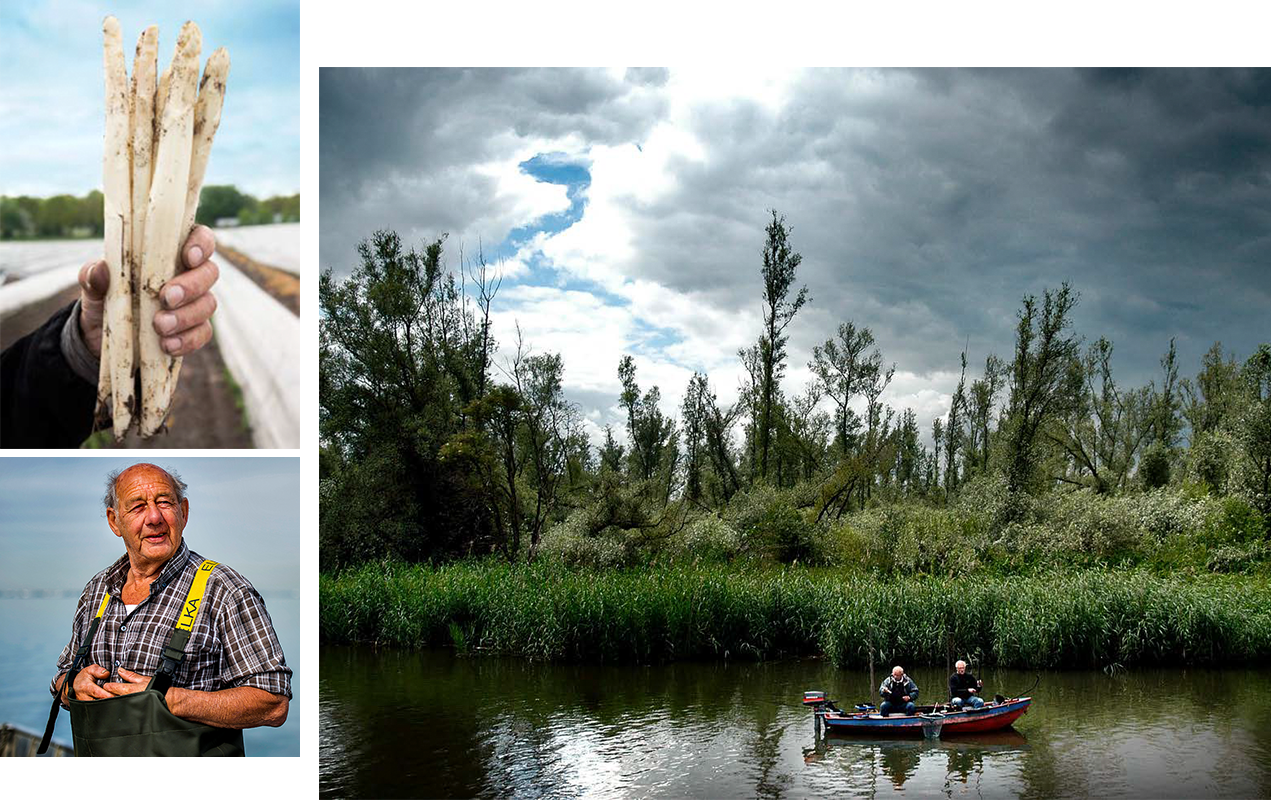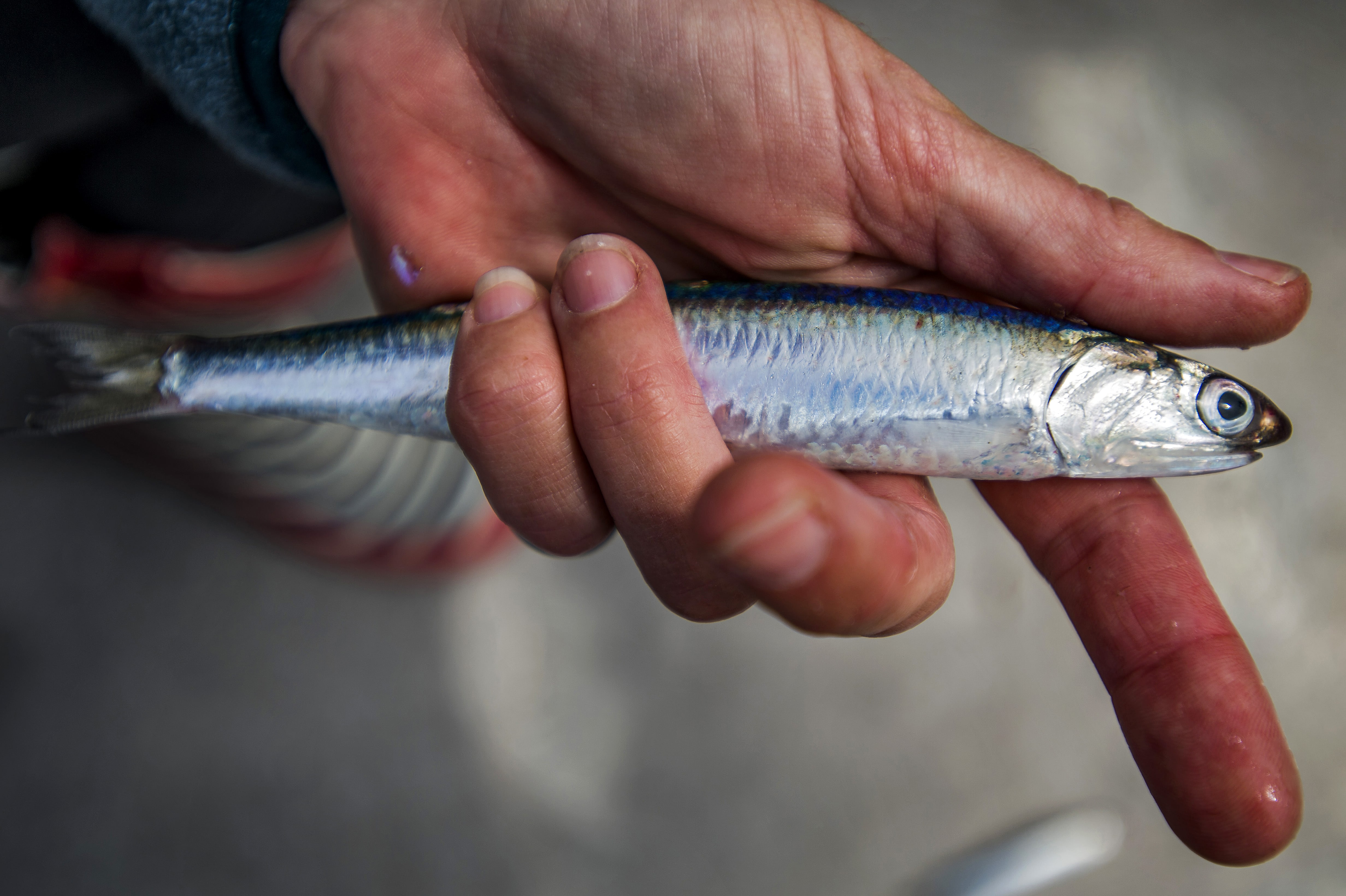
West-Brabant
Salty, sweet, delicious West-Brabant
Discover the rich and diverse landscape of West-Brabant where Van Gogh found his first inspiration. A fertile landscape of peat moors and hills created by the sea was reclaimed piece by piece. It is an area with unique freshwater tides that can be felt even in Gouda and ’s-Hertogenbosch. Filling up with river water, the drowned farming region Zuid-Hollandse Waard then became the Biesbosch National Park, and Dordrecht turned into an island. In 1815, after 150 years of Hook and Cod Wars (Hoekse en Kabeljauwse twisten), the Protestant King William I handed over the Biesbosch and Protestant Land van Altena to the Catholic province of North-Brabant. The shared urgency of taming the sea brought the Netherlands together. Experience the generous contribution of West-Brabant’s farmers, fishermen and top chefs to Brabant’s hospitality: taste the superior anchovies, salty asparagus and strawberries, discover the sweet sugar history of the region, and savor special local wines and beers
To Discover


A taste of Van Gogh
Van Gogh and the impressions of the landscape
Vincent van Gogh was born in the West-Brabant village of Zundert on 30 March 1853. Vincent started drawing in his youth, often working outdoors. That means the landscapes and skies of Brabant inspired his first works.
The life and landscape of Brabant represented a lasting source of inspiration for Vincent van Gogh. We can see this in the work he made after he had already left the province. He always kept longing for the Brabant that had shaped him, which he clearly expressed in his letters. Even though most of his famous works were not made in West-Brabant, his very first work was born here. Let us look at the flavor and color of this landscape that inspired Van Gogh.
West-Brabant boasts a highly varied landscape: rich river clay soils and natural landscapes, areas by the sea and a unique freshwater tidal landscape that impart their flavors to the produce grown there. Asparagus, soft fruits, rye, wheat, oat, potatoes, rapeseed and sugar beet are grown primarily in the fertile parts of the province. The more arid, higher sandy soils are located mostly in the eastern part of West-Brabant and support livestock breeding, mainly sheep.




Vincent’s first memories
Van Gogh walking tour in Zundert
The Van Gogh walking tour leads through the area in which Van Gogh was raised. The tour starts in front of the Van Gogh House at an audio pillar and leads through the garden with the well of the house in which he was born,
View



Vegetables take the lead
Restaurant De Zwaan, Etten-Leur
Just like Vincent van Gogh, Dutch Cuisine restaurant De Zwaan in Etten-Leur finds inspiration in the landscape of Brabant. The kitchen was awarded a Michelin Star 22 times. Top chef Carlo Chantrel mainly works with regional, organic seasonal produce like.....
View“Inspired by the stories of farmers nearby”
Carlo Chantrel
Inspired by the stories of farmers from the area, my team and I prepare delicious, contemporary and original seasonal dishes with regional produce. In addition to my ingredients, which consist of regional and organic seasonal produce, I am inspired by classic cuisine finished with a modern gastronomic touch. Starting from this classic basis, I always try to be forward-looking.


THE SALTY FLAVOR OF THE SEA


Feel the rhythm of nature
The Biesbosch National Park, a unique freshwater tidal area




Past, present and future
Biesbosch Museum Island
The Biesbosch Museum explores the past, present and future of the Biesbosch. In seven museum spaces and six cabinets, the history of t Biesbosch from the St. Elisabeth Flood is exhibited in chronological order. Above all, the Biesbosch Museum...
View

The coast of West-Brabant
Brabant by the sea




Innovation of Dutch classics
Restaurant Hemingway, Bergen op Zoom
Right in the middle of the marquises’ city Bergen op Zoom, Tim Schimmel is the operational manager of restaurant Hemingway and Grand Hotel de Draak, Holland’s oldest hotel. Bergen op Zoom boasts over 800 monuments and a rich and eventful past. The Markiezenhof...
View“We innovate Dutch classics in a surprising way”
Willy Heeren
In our kitchen we create exciting combinations and innovate Dutch classics in a surprising way. We like to work with lobster from the Eastern Scheldt when it is in season, asparagus from the Brabantse Wal, or the oyster mushrooms grown by Aardzwam & Zo in a cellar just 200 meters from the restaurant on our own coffee grounds. One of our signature dishes is a red beet carpaccio. The beets are cooked in VOC spices with mustard, balsamic vinegar and a goat cheese crumble. It is a beautiful way to make our guests love a vegetable dish in line with the Dutch Cuisine principles.

“One of the world’s last active weir fishermen ”
Henk van Schilt
With a job as a maintenance engineer with General Electric in Bergen op Zoom, Henk van Schilt (57) seemed predestined for a career in mechanical engineering. Until he met his current partner Rian, the daughter of weir fisherman Cor van Dort. After having been a jack of all trades with the company for years, Van Schilt became an employee of firma Van Dort in 1997, which was owned by the eponymous and last remaining weir fishing family in Bergen op Zoom. Today, Van Schilt and his father in law Cor van Dort (86) are among the world’s last fishermen using a fishing weir.



Triple A
Ansjovis, Aardbeien en Asperges (anchovies, strawberries and asparagus)




White gold from salty soil
Brabantse Wal Asparagus
The flavor of Brabantse Wal Asparagus is influenced by the pure groundwater of the Kalmthoutse Heide natural reserve, which runs off underground in the direction of Zeeland, and the salty air of the west wind...
View


SEASONED BY OUR OWN SOIL


Delicate fruit in good hands
Delicious soft fruit
“I didn’t know an apple could be this delicious”
Lobke Meekes and Juanita de Jong
The fact that the best apples disappear into appelmoes (applesauce) is a paradox that required a creative solution. The artist Lobke Meekes set to work, developing Plukgoed in collaboration with the apple farmer Juanita de Jong.





Delicious Plukgoed
Plukgoed machines in West-Brabant
Plukgoed brings apples on the market as a seasonal product. Flavor is the primary consideration for Plukgoed, and flavor is determined by the moment of picking, storage, and transport. This is why Plukgoed stimulates apple farmers to harvest apples at the right moment...
View

A piece of history
The Potato Eaters




Patat vs Friet
Brabantse friet (fries the Brabant way) in Bergen op Zoom
The words friet and patat are both derived from the French patates frites (fries, literally fried potatoes). In fact, the two Dutch words are corrupted forms of the two words in the French original. Flemish-speaking Belgians use the word patatten for potatoes, so the battle is already decided before it has even started...
View

Hitting the sweet spot
Sugar industry in Brabant




Oosterhoutse kaneelstok
IJssalon ViaVia, Oosterhout
Fries were not the only foodstuff to be introduced at a fair in Brabant. De Oosterhoutse Kaneelstok (cinnamon stick from Oosterhout) also became popular after being introduced at a fair. These sticks have been made according to a recipe from Oosterhout since 1894. The Oosterhoutse Kaneelstokken factory produces 17 million sticks in...
View

Brabant’s hospitality
Breda garrison city




Foods & Boots
Walking route in garrison city Breda
The Foods & Boots walking route tells the story of Breda as a garrison city in which the locals live for and off the army. The route links military buildings and their history to stores, pubs and restaurants. Along the walk...
View